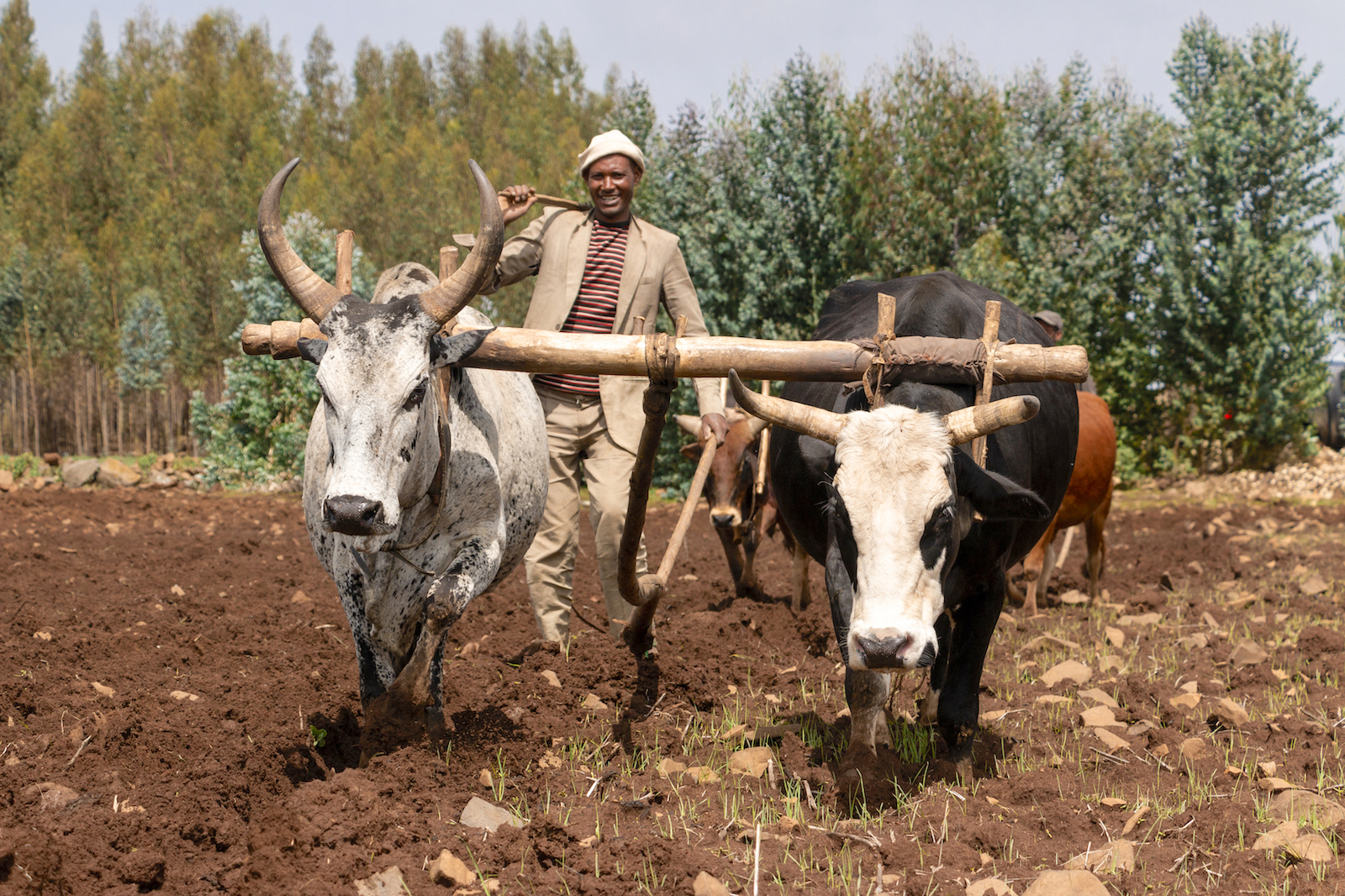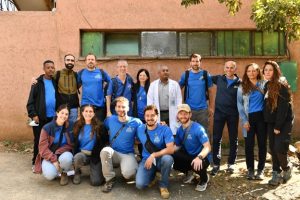
Ethiopia’s agriculture has shown remarkable resilience over many centuries but it is now increasingly failing, so remarked a scholar in the sector.
Getachew Diriba, on his policy making paper /2020, said that this was demonstrated by the remarkable way it has sustained a steadily increasing Ethiopian population with millennia-old tools and systems of production. Ethiopia is one of the original centers for crop and livestock domestication that started during the Neolithic revolution ten thousand years ago.
Since then, Ethiopian farmers have continued to utilize their ancient system of production despite changing ecological and population pressures, feeding, if with difficulty, Ethiopia’s growing population into the 21st century with their generationally acquired wisdom and skills.
He went on to say that Ethiopian agriculture is increasingly failing as farmers work to expand agricultural lands at a great cost to the environment and the delicate ecological system, thereby risking the very fabric of their own livelihood.
Systemic obstacles to agricultural and rural transformation in Ethiopia can be summarized as lack of sustained and intergenerational commitments to transformation, constitutional and legal constraints, government crowding out the private sector leadership, lack of mechanization options and constrained input supply system, lack of effective and accountable organizational capacity, lack of agricultural and rural financial and credit facilities and environmental degradation.
“Ethiopia’s institutions have refused to recognize the devastating impact of technologically-lagging agriculture despite awareness of the 4th industrial revolution that would have relieved pressure on the land and offered a respite from the numerous dimensions of food insecurity,” he pointed out.
According to him, implementing agricultural and rural transformation cannot take place without an integrated and synergistic linkage with other sectors of the economy. In the context of Ethiopia, there are four interlinked sectors: agriculture along with its rural environs, manufacturing, services, and urbanization.
The context and developmental stage of Ethiopia demands recognition that agricultural and rural transformation is intrinsically linked.
He further indicated that the starting point for decisive and urgent agricultural and rural transformation is the recognition that Ethiopia’s smallholder agriculture is faced with severe challenges that have been accumulating for many decades.
Ethiopia has now put in place a number of building blocks to rollout an economy-wide transformation at speed and scale.
These building blocks include many decades of experience across different sectors and the economy, allowing for expanded infrastructure and services, the conception and construction of industrial parks at strategic locations, expansion of primary, secondary and tertiary educational opportunities, and the achievement of quantitative production increases in agriculture.
In implementing agricultural and rural transformation, Ethiopia must climb new heights of economic and social transformation, building on the gains and experiences of the past, and committing itself to a long-term, inter-generational, and sustainable transformation of agriculture, he added.
As to him, these long-term commitments will require continuous adaptation of programs and strategies within and across each of the principal sectors. The quadruple sector approach offers an inclusive platform of development that can dramatically improve the conditions of Ethiopia’s population, especially those in rural areas.
Unquestionably, rolling out an economy-wide transformation with agriculture as a lead sector demands bold commitments and tangible actions by all Ethiopians and its leadership at all levels. It involves creating sufficient and necessary conditions to trigger and sustain agricultural and rural transformation.
Added he said that agriculture and rural transformation must remain central and serve as the precondition for the transformation of the other principal sectors. For this reason, Federal and Regional State guidance is critical to establish linkages among the principal sectors and placing agriculture as primus inter pares, first among equals.
The development of rural industrialization and expanded manufacturing capacities must be also supported, initially focusing on agro-processing including production of poultry, dairy, beef cattle and oilseeds, and flour mills just to mention a few areas.
On his speculation, the very foundation of rural industrialization is enhanced productivity and a gradual move to specialization in specific products. A comprehensive list of realistic and locally viable rural industrialization opportunities and options must be worked out at Kebele and Woreda level.
Rural industrialization must be conceived strategically, and it must reflect the condition of Ethiopian smallholder farmers. In this way, rural industrialization can serve as an inclusive development opportunity.
He remarked that urbanization typically accompanies rapid progress of agricultural and rural transformation, which in turn can be fueled by expanded urbanization, especially in the growth of manufacturing and services.
As agricultural transformation takes off, and as a result of rises labor productivity, increasing numbers of people will be compelled to leave the rural areas.
These people will be required to either sell or mortgage their land and move to urban centers to establish themselves as wage laborers or traders.
He noted that a decentralized urban development strategy commensurate with strategic urban planning must be considered, providing services such as land valuation and designation of urban sites, water supply, electricity, educational and health facilities, housing designs including affordable building material, among others.
The key is to ensure that there is a sufficient pull factor at the Kebele and Woreda level for urbanization so that all surplus labor does not try to move into Federal or Regional capital cities.
While some migration is unavoidable, sufficient urban service delivery incentives and policy instruments must first be put in place at a decentralized level, focusing on small towns.
Adding he said that this must include the provision of rural housing, including key facilities such as rural electrification, water and rural transportation systems. Rural transportation systems must permit farmers to commute to and from their farms should they decide to retain a dualistic economic model.
Finally, there’s the need for social, physical, digital and market infrastructure and services as these will increase dramatically as the productive sectors of the economy transform.
As to him, the quadruple sector transformation framework replaces the Agriculture Lead to Industrialization framework, and a major task will be balancing resource allocation judiciously among the principal sectors.
To reiterate: withholding resources too soon, or withdrawing them from agriculture to finance expansion in other sectors will delay agricultural transformation and limit supplies of food and raw material, such as cotton, oil seeds, or grain to the manufacturing and service sectors.
It would also undermine the national and household wealth creation that can be reinvested in infrastructure and technology generation.
The service sector would also suffer from tumbling demands following high food commodity prices, and have massive effects on consumers as well as wage-dependent population in both rural and urban areas. These are, in fact, the precise conditions playing out in contemporary Ethiopia.
The Ethiopian Herald April 26/2020
BY MEHARI BEYENE





